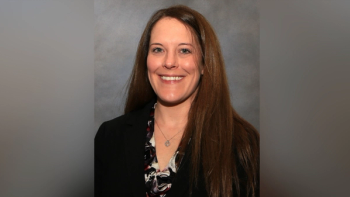
- Pharmaceutical Commerce - March/April 2016
Use data analytics to monitor 340B discount drug pricing
Discerning how and where products are discounted is an expensive headache for manufacturers
Chart 1. Ship-To and Bill-To Hierachies
Traditionally, pharma managers responsible for managed markets, government price and corporate finance have paid more attention to bellwether government drug programs such as Medicaid, Medicare and the Federal Supply Schedule. As the industry refocuses on more innovative, expensive specialty drugs and channel designs shift, however, manufacturers are growing increasingly concerned with the 340B Drug Discount Program. 340B drug pricing came into being with the Public Health Services Act of 1992 and lowers outpatient drug costs for specific classes of hospitals and clinics. The additional profit helps to subsidize care for indigent patients or, as stated in the statute, to “stretch scarce resources.”
Some definitions help to understand what is going on. The 340B program is administered by the Office of Pharmacy Affairs (OPA) within the Health Resources and Services Administration (HRSA), a part of HHS. OPA registers eligible healthcare providers, called “covered entities,” and applies formulas to drug prices to ensure a significant discount. Those drugs are to be used only by eligible patients, who have an ongoing relationship for medical care from the covered entity. Covered entities are restricted to nonprofit hospitals, and some have an HHS categorization as “disproportionate share hospitals,” meaning that they provide services to a relatively higher percentage of indigent, Medicaid or Medicare patients. Finally, there are a variety of business arrangements between covered entities and in-house or contract pharmacies that supply drugs to them; a common industry parlance is to speak of “parent-child” relationships between covered entities and contract pharmacies.
So what has changed? In a nutshell, the Affordable Care Act (ACA) has had a colossal impact as a result of the Medicaid expansion and the inclusion of many new types of providers, such as freestanding cancer and critical-access hospitals. The number of covered entities and contract pharmacies has swelled 30–40% annually since 2010. According to the Office of Pharmacy Affairs’ (OPA) 340B database, as of January 12, 2016, there were 34,586 covered entity sites including 14,073 disproportionate share hospitals. Also, since the HRSA liberalized the number of contract pharmacies that a covered entity can manage, the number of contract pharmacies has ballooned up to 40,185.
According to the Medicare Payment Advisory Commission, a private organization that reports to the US Congress, 340B spending had increased threefold between 2005 and 2013, when it was more than $7 billion. Covered entities saved some $3.2 billion in FY2013, and many people in industry are asking, are all these discounts being taken properly?
In parallel with the Medicaid and 340B expansion, the ACA increased the Medicaid unit rebate amounts that brand and generic manufacturers owe to the states. Additionally, ACA redefined the Average Manufacturer Price, which significantly increased the minimum mandatory 340B discount levels.
At a policy level, the expansion seems counterintuitive. The ACA was designed to reduce the levels of uninsured patients and unreimbursed care by healthcare providers. So why expand 340B at all? In fact, several recent healthcare economic analyses have shown that provider charitable-care levels remain at the historical 5% rate even as the number of uninsured patients has declined. The 2015 Government Accounting Office report on 340B purchases of oncology drugs indicated that within some disproportionate share hospitals, charitable care is no greater than in 340B-ineligible hospitals. Several industry and trade associations have fiercely criticized these reports, but there is clearly an intensifying public policy debate that has yet to be resolved.
Table 1. Covered Entity Audits
Table 2. Adverse Findings
Table 3. Sanctions
To its credit, HRSA implemented a program-integrity initiative and in August 2015 released its long-anticipated mega-guidance, which clarifies previously fuzzy definitions such as “patient eligibility,” “diversion,” “record keeping” and “auditing.” The centerpiece of the program-integrity initiative included audits of covered entities (Table 1) and documentation of corrective action plans (CAPS). Between 2013 and 2015, HRSA audited 344 covered entities. In some cases, the same covered entity was audited in successive years if there was an adverse finding, which total to less than 1% of all covered entities over a three-year period. Nonetheless, 78% of the audits yielded in one or more adverse finding.
While some of the adverse findings such as an incorrect name or street address in HRSA OPA database are relatively benign, the disquieting results summarized in Table 2 indicate that nearly 50% of audited covered entities diverted products (i.e., purchased/prescribed discounted products incorrectly) and 22% benefited from duplicate discounts (i.e., purchased at the discounted 340B price and were paid a Medicaid rebate).
As a result of these findings, 57% of the audited covered entities had to repay manufacturers,* and nearly 10% resulted in termination of covered entities, specific sites or contract pharmacies from the program. To emphasize how rampant program abuse appears to be, only 35% of the covered entities were assessed no sanctions at all. Table 3 portrays a three-year summary of sanctions.
The fundamental question all program stakeholders are or should be asking themselves is to what extent is a small minority of audited covered entities representative of the vast unaudited majority. Assuming that the audits are a representative sample of all covered entities, the forecasted repayment rate would range between 50-64%. In other words, the revenue leakage risk for manufacturers with substantial 340B sales is clearly material and needs to be monitored from a margin erosion and compliance perspective.
Resolving Data Gaps
The reality is that manufacturers have limited options to gain transparency due to data gaps, complexity and the resources required to reliably marry together direct and indirect sales, direct sales chargebacks and the HRS OPA database. Over the past few years, several manufacturers investigated covered entities for suspicious transactions only to find out later that their data was incorrect or incomplete.
Confronted by these challenges, many manufacturers are struggling to implement analytic solutions that can accurately monitor all inpatient and outpatient purchasing within participating hospitals, clinics and pharmacies. At a high level, manufacturers are seeking the following capabilities:
- Crosswalk identifiers such as DEA, HIN, NPI and 340B IDs.
- Aggregate sales, returns and chargebacks transactions at the child and parent level by wholesaler, including visibility to split billings.
- Reconcile unmatched or orphaned transactions across the diverse datasets
- Summarize all 340B-eligible and ineligible lines of business within a covered entity with drill-downs to specific inpatient, outpatient and contract pharmacy locations
- Highlight suspicious levels of 340B sales or returns
- Consider industry benchmarks and mitigating factors such as Medicaid exclusion status, class of trade, product characteristics and channel designs (e.g., buy and bill, specialty, and retail)
- Guide the manufacturer to unified transactional details across datasets (indirect and sales, chargebacks, returns, etc.)
- Prioritize suspicious activity for deeper investigation and audit support.
It is a common practice today for manufacturers and their trading partners to use EDI (Electronic Data Interchange) data to record transactions; the EDI 867 dataset, “Product Transfer and Resale,” is one of the more useful EDI interchanges. Fortunately, the 867 indirect sales data that manufacturers collect from their wholesalers, specialty distributors and specialty pharmacies on a daily or weekly basis can be leveraged to fill in visibility gaps. 867 data represent a complete history of all of the trade partner sales of a manufacturer’s product to its downstream customers including inpatient pharmacies, outpatient mail pharmacy or retail location. Although there is redaction within 867 reporting, all 340B transactions are at least partially visible in the 867 data.
340B Analytics Requires Master Data Management
To use 867 as a comprehensive 340B data source and crosswalk it to chargeback transactions requires addressing unique data management issues. For example, many Covered Entities comprise numerous campuses, facilities and locations including primary care and long-term care, infusion centers, inpatient pharmacies, and outpatient pharmacies. Maintaining an accurate, current database of all sites of care and parenting each properly are highly complex and resource-intensive processes because there is no universally adopted system of record inclusive of every purchaser.
Complicating matters, the use of contract pharmacies to fill prescriptions at an external retail, mail, or specialty pharmacy (i.e., non-buy-and-bill products) is expanding. Covered Entities will often contract with multiple pharmacy locations, and pharmacy stores often support more than one covered entity. As a result, manufacturers need to manage at least two types of parent relationships: one typically represents the ship-to hierarchy and the other the bill-hierarchy. Chart 1 provides an illustrative example of the necessary parent-child relationships that need to be maintained.
Without maintaining a hierarchy such as this example, manufacturers would be unable to understand the total product sales to “XYZ University System” and the percentages of 340B vs. non-340B sales/returns. Similarly, manufacturers want to understand the segment mix within the “Waldo’s chain pharmacy” and even down to a specific individual store. 340B analytics must be able to report not only what percentage of Waldo’s Store #4320 is 340B vs. non-340B but also what percentage is for XYZ University System, Hope Cancer Center, the Chemo-Infusion Center or another Covered Entity it contracts with.
As noted, visibility and accurate data analytics are vital. Once a manufacturer has visibility and the complete history, then it is in position to approach a covered entity to work towards a resolution. HRSA’s proposed mega-guidance of August 2015 specifies that only after the manufacturer can document its attempt to work in good faith with a covered entity can they file an audit request and audit work plan with HRSA. If the work plan is approved by HRSA, the manufacturer can hire an independent auditor to initiate an investigation and possible repayment.
Manufacturers should consider several other actions to drive accountability, visibility and confidence that 340B discounts are honored correctly, including:
- If the level of 340B sales warrants, designate a clear owner within managed market operations for all 340B business issues. Often internal responsibilities are divided along functional lines with competing priorities (i.e., account management, contracts and pricing, government pricing/compliance).
- Work with wholesalers and specialty distributors to standardize the identification of 340B transactions and billing transactions in both chargeback requests (EDI 844) and product resale reports (EDI 867). Both transactions should be submitted with either HIN or 340B IDs so as to clearly enumerate ship-to and bill-to locations. Ideally manufacturers should delineate this requirement in their distribution services agreements for both datasets.
- More closely monitor and enforce distributor channel limitations on eligible classes of trade.
As manufacturers implement the analytic capabilities needed to monitor and audit the program, the level of program abuses, unintentional or otherwise, should abate over time, provided covered entities and contract pharmacies enact HRSA’s proposed mega-guidance.
ABOUT THE AUTHOR
David Weiss is director of solution engineering at IntegriChain. He has 25 years of broad experience in pharmaceutical/medtech channel, trade, contract and government price compliance, both as a consultant and solution provider. IntegriChain is a leading provider of data analytics for healthcare suppliers, including 13 of the top 15 biopharma manufacturers. IntegriChain tools and services improve channel collaboration and raise the efficiency of distribution process to reach customers and healthcare providers.
Articles in this issue
over 9 years ago
Hub Services Special Report 2016over 9 years ago
Immunoglobulin (IG) drives the blood-plasma therapeutics marketover 9 years ago
Agenda set for 2016 HPCLC Conferenceover 9 years ago
J. Knipper heads CBI conference on sampling managementover 9 years ago
Schreiner introduced a double-capping feature to vialsover 9 years ago
Specialty pharma becomes 'hub enabled'over 9 years ago
A Conversation with Matt Wallach, Veeva SystemsNewsletter
Stay ahead in the life sciences industry with Pharmaceutical Commerce, the latest news, trends, and strategies in drug distribution, commercialization, and market access.





